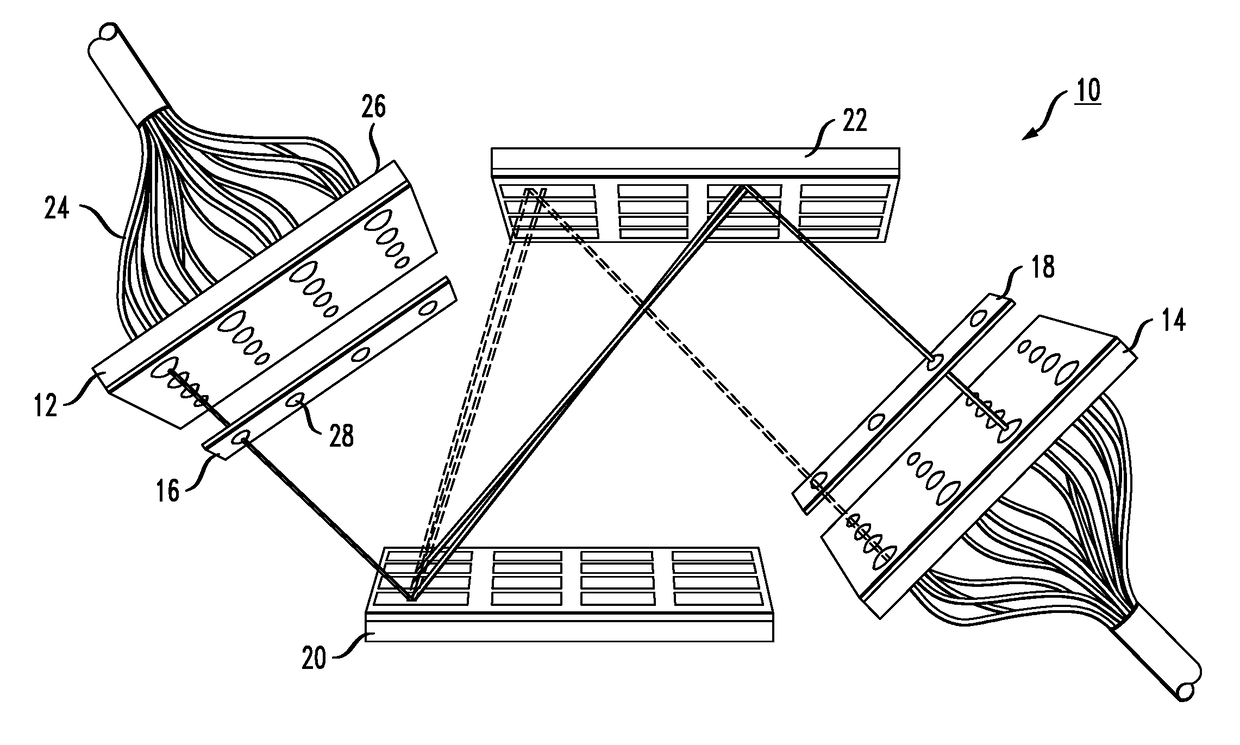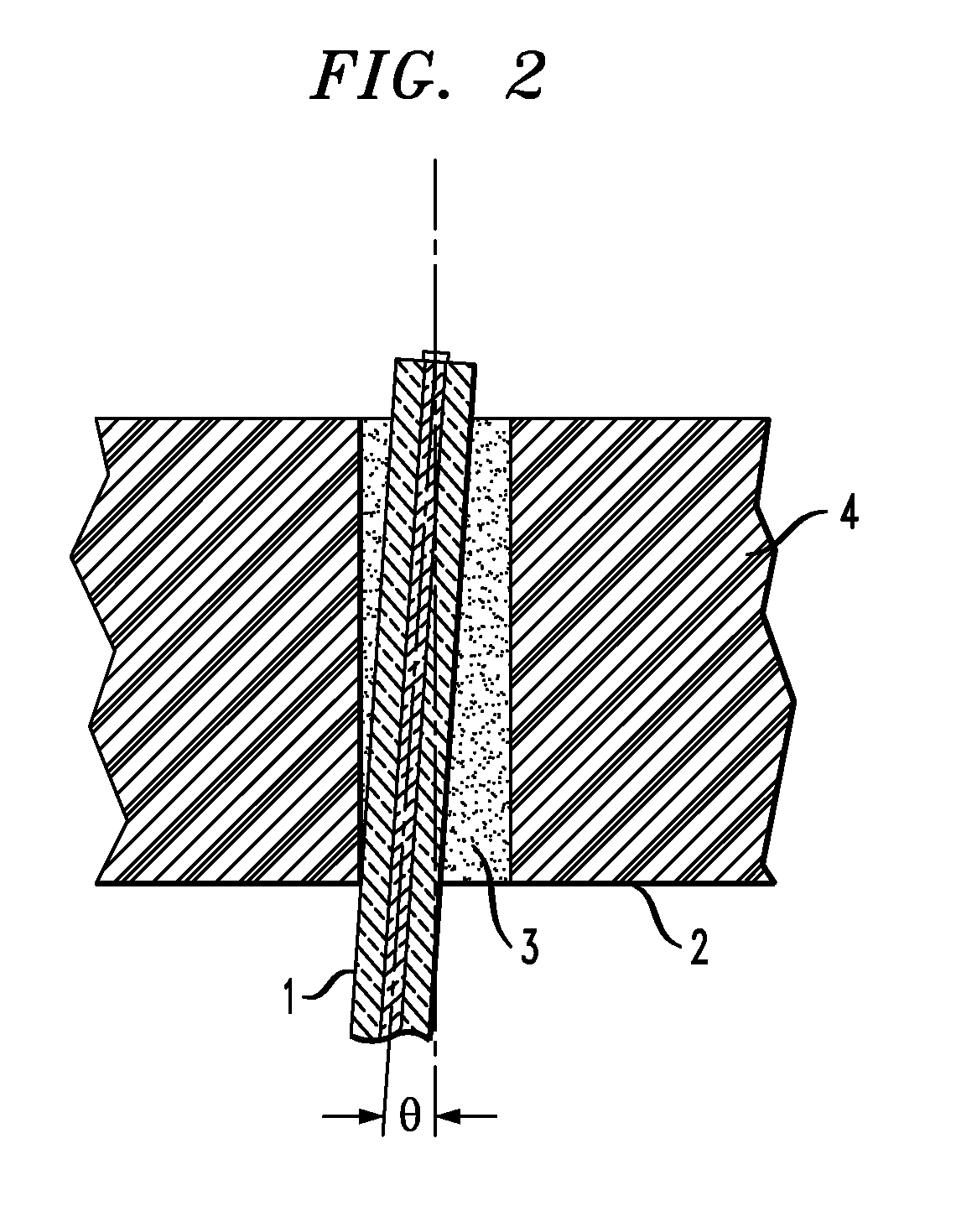Monolithic Two-Dimensional Optical Fiber Array
a two-dimensional, optical fiber technology, applied in the direction of optics, instruments, optical light guides, etc., can solve the problems of large insertion loss errors, angular pointing errors at the output, and fiber bending some amount, so as to reduce assembly complexity and minimize component costs
- Summary
- Abstract
- Description
- Claims
- Application Information
AI Technical Summary
Benefits of technology
Problems solved by technology
Method used
Image
Examples
Embodiment Construction
[0031]As briefly mentioned above, FIG. 1 illustrates a typical optical communication switching system 10 that may utilize the monolithic 2D fiber array component of the present invention. As shown, switching system 10 provides “fiber-to-free-space” switching between a first 2D fiber array 12 and a second 2D fiber array 14 via associated lens arrays 16,18 and MEMS arrays 20, 22. Each fiber array includes a plurality of individual optical fibers 24, separated by a predetermined spacing (hereinafter referred to as “pitch”) and coextensive with the surface of the array to direct light beams in a direction perpendicular to the array surface (pointing, as discussed above in association with FIG. 2).
[0032]Referring to first 2D fiber array 12, fibers 24 are shown as being introduced through the back side of an array substrate 26 and distributed in an array configuration (here, a 4×4 array). Array substrate 26 is formed such that the endfaces of the inserted fibers align with a set of indivi...
PUM
 Login to View More
Login to View More Abstract
Description
Claims
Application Information
 Login to View More
Login to View More - R&D
- Intellectual Property
- Life Sciences
- Materials
- Tech Scout
- Unparalleled Data Quality
- Higher Quality Content
- 60% Fewer Hallucinations
Browse by: Latest US Patents, China's latest patents, Technical Efficacy Thesaurus, Application Domain, Technology Topic, Popular Technical Reports.
© 2025 PatSnap. All rights reserved.Legal|Privacy policy|Modern Slavery Act Transparency Statement|Sitemap|About US| Contact US: help@patsnap.com



